No products in the cart.
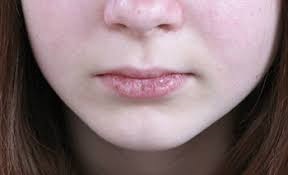
What is Angular Cheilitis?
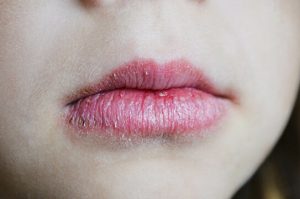
Angular Cheilitis
Why do the corners of the mouth mostly get cracked?
Fareed Pharma World: Do you ever find yourself wondering what creates a crack in the corner of your mouth? As a service to you, we have put together this detailed manual.
Patients with chapped lips and mouths are common in dental and dermatology clinics. A mouth infection called angular cheilitis is also known by its Spanish name, perleche.
Patients with perleche, named from the French word for “lick” (lecher), are characterized by their constant need to lick the affected area. Additional signs of this sickness include lip redness and cracking at the lip corners.
A “local” origin, meaning the mouth or its surrounding areas, is usually to blame. Rarely, systemic (bodily) disorders can also act as a predisposing factor for perleche.
Infection may occur if the corners of the mouth are fractured or injured. The most common cause of the disease is a yeast called Candida albicans.
Just what is Angular Cheilitis?
Angular cheilitis is frequent skin inflammation. The damaged corners of your mouth may become sore and irritated. Although irritating, angular cheilitis seldom becomes fatal.
Angular cheilitis is also known as angular stomatitis or perleche. Many people confuse cold sores with angular cheilitis. The herpes simplex virus is responsible for cold sores. Angulated cheilitis does not spread from person to person. One downside is that cold sores can spread.
Now, let’s take a look at what causes the corners of the mouth to crack.
Can Anyone Get Angular Cheilitis?
Angular cheilitis is more common in the very young and the very old. A dry mouth in the elderly might cause dentures to slip or cause the skin around the mouth’s corners to sag. A baby’s mouth might get sore from drooling, thumb sucking, and pacifier use.
What Causes Corners of Mouth to Crack?
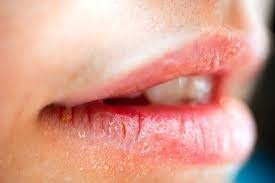
Angular-Cheilitis
Corners of the mouth that are constantly wet can feel parched. Angular cheilitis can develop if the skin around the mouth and corners is extremely dry. Cracking and bleeding of the skin are possible consequences of dryness. It is possible that infection or inflammation could develop if bacteria or fungi were to find their way into a crack.
Aside from dry, cracked lip corners, the following can cause angular cheilitis:
- Eczema or dermatitis brought on by an allergy.
- Ill-fitting or missing dentures.
- Drooling when sleeping is a common problem.
- Thrush a fungal infection of the oral cavity.
- The most common dental problem is teeth that aren’t properly aligned.
- Allergies to the skin.
- Thumb sucking, pacifier use, and other similar habits.
- Having a mask over one’s face
Your chapped lips and sore tongue could result from any of these four potential factors.
The Natural World
Your skin may suffer damage from the elements at some point. Extreme cold, dry indoor heating, exposure to severe wind, and even sun damage can all contribute to this disease.
Therefore, it’s crucial to safeguard yourself from such dire conditions and care for your lips accordingly. If your mouth’s corners are cracked, environmental factors may be blamed.
Dehydration
Skin dehydration occurs when the body is dehydrated. Keeping an eye on your water intake is critical if you tend to perspire or urinate excessively. Because dehydration can lead to angular cheilitis, you should drink plenty of water.
Parched throat
Because of the correlation between dry mouth and angular cheilitis, treating dry mouth is essential in preventing angular cheilitis. Licking your lips too much might also cause the corners to break.
Malnutrition
The College of Family Physicians of Canada showed that low blood iron levels are associated with acquired angular cheilitis.
That’s why getting enough iron in your diet is so important. Additionally, vitamin B and zinc deficits are linked to angular cheilitis. Accordingly, check that you aren’t deficient in any necessary nutrients.
Here are some measures you can take to prevent angular cheilitis:
- When going outside in the cold and dry weather, apply plenty of moisturizer to your lips and face. Try some lip balm or petroleum jelly if you need to hydrate your lips. This prevents your skin from losing moisture and helps it stay soft and supple.
- It is also important to stay hydrated throughout the year, especially in the winter when individuals are less likely to drink water because of the chill. Furthermore, avoid licking your lips.
- If the cracks continue to show up despite your attempts, medical attention is warranted.
We must investigate what factors lead to the cracking of the mouth’s corners.
Medications
Chemotherapy and the acne medication isotretinoin, which can irritate the skin, can add to the dryness that causes angular cheilitis.
Syndromes of Immune Activation
Xerostomia is a symptom of Sjogren’s syndrome, an autoimmune disorder.
Other autoimmune diseases like lupus, Crohn’s disease, and ulcerative colitis can cause immune system changes that raise the risk of developing angular cheilitis.
Syndrome of Down
Hypotonia, or low muscle tone, could play a role in this association. People with Down syndrome may experience discomfort in the corners of their mouths because they tend to keep their lips open and protrude their tongues.
Age
These factors increase the likelihood of developing angular cheilitis in the elderly. Dry mouth, for instance, is more common among the elderly.
This makes it harder for people to fight off infections, as their immune systems are weakened. The wrinkles and lines that develop around people’s lips as they age pose a new threat.
5 Easy Ways to Help Them Get Better
1. Petroleum Jelly
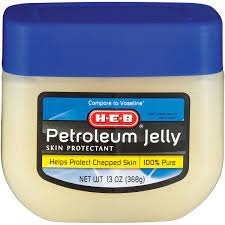
petroleum-jelly
The corners of damaged lips continually bleeding and breaking open can be repaired using the quickest and easiest method: petroleum jelly.
Keep some petroleum jelly on hand always; it is a protective barrier against further infection and kickstarts the body’s natural healing processes.
Since we’re discussing what triggers the cracking of the mouth’s corners, it’s vital to learn how to treat the condition.
2. Coconut Oil
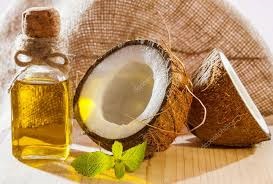
coconut-oil
If you don’t have any petroleum jelly on hand or if the splits aren’t too severe, coconut oil will do. Petroleum jelly can protect your skin from harm, but it does not have any curative properties.
Coconut oil’s antimicrobial capabilities protect the skin from infection and infection and fight off fungi and germs.
3. Aloe Vera
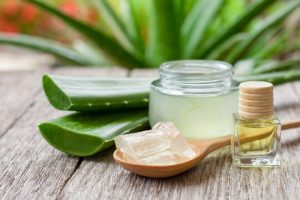
Alovera-gel
If you have an aloe vera plant on hand, you can try applying it to the dry areas of your lips, and you should see good effects. Aloe vera is like a combination of coconut oil and petroleum jelly. Here is the right product if you want something therapeutic and protective for your skin.
4. Yogurt

Yogurt
Good bacteria can defend themselves from bad bacteria. A sick person can benefit from the live and active microorganisms in yogurt by applying it to the sore spots in the corners of their mouth daily. The nicest thing is that it is not required to be worn full night.
5. Eat foods high in vitamin B
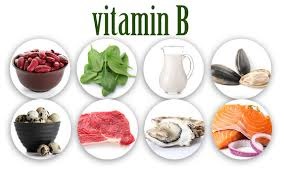
Foods-with-Vitamin-B
If you’re suffering from mouth cracks, you can speed up the healing process and fight off any underlying infection by eating more vitamin B-rich foods. Vitamin B can lead to cracked lips for various reasons, including conditions and improper skin care.
Obtain Medical Attention

Medical-Attention
If you’ve exhausted all other options and the infection has returned, your dermatologist can prescribe an antifungal or antibiotic cream to completely eradicate the problem.
Therefore, these remedies can assist you in fixing whatever is making your mouth’s corners split.
Reduce the Risk of Developing Angular Cheilitis
Proper skin care and hygiene go a long way in warding off angular cheilitis. It’s important to keep the soft tissue within your mouth moist and undisturbed to stop the spread of bacteria and yeast.
Petroleum jelly or coconut oil can be used to seal the creases of your mouth against saliva. The application of a lip balm regularly can prevent dry, chapped lips.
Avoid situations where your mouth feels dry, as this might lead to an overproduction of saliva.
If the folds in your mouth are to blame for your angular cheilitis, your doctor may prescribe oral appliances or fillers to help.
FAQs – Why Do People’s Lips Often Split?
How can I repair the split in my mouth’s corner?
Antifungal therapies or topical steroids may alleviate swelling and pain in the cracked corners of the mouth. A lip balm or petroleum jelly barrier can help protect your mouth and keep it moist and healthy.
For what deficiency is the corner of the mouth prone to cracking?
Lack of iron, zinc and the B-complex vitamins (especially riboflavin and B12) is to blame. Deficits in iron, zinc, and vitamin B12 are common among vegetarians. The same holds if your diet lacks protein, which your body uses to produce antibodies.
Why do I constantly get cracks in the corners of my mouth?
Saliva builds up in the creases of your mouth. There is a risk of skin cracking in the area when it dries. Frequent lip licking has a calming effect on the skin. Fungus loves the warm, wet environment that is provided by the corners of your mouth.
How soon angular cheilitis cure, if at all?
Because of its antibacterial properties, baking soda can help reduce discomfort.
Lip balms and moisturizers without added flavorings or scents, such as petroleum jelly or virgin coconut oil, can effectively treat lip infections. You can soothe the pain by massaging a thin slice of cucumber into the affected area.
Can you tell me what kinds of meals trigger angular cheilitis?
Nutritional deficiencies are the leading cause of cheilitis. Deficiencies in vitamin B2 cause a decrease in energy production due to a slowing of fat, protein, and carbohydrate metabolism. Increased consumption of B2 from foods like eggs, milk, and lean meat can help treat cheilitis.
Please see a medical professional if you have further questions about why your cracked lips or mouth.
Can stress lead to fissures in the mouth’s corners?
Some people acquire angular cheilitis because their immune systems suppress due to stress.
Although deficiencies in vitamins and minerals do not directly cause angular cheilitis, they can significantly weaken the immune system and increase the risk of infection.
Is there a way to tell whether someone has a B12 shortage by looking at their tongue?
Still, Signs of a B12 deficiency also include tongue pain and redness. Because glossitis promotes swelling in the tongue, the tongue may develop a smooth appearance.
Can dehydration trigger an episode of angular cheilitis?
If you avoid drinking enough fluids you have more chances to get Cheilitis. Dehydration typically manifests as dryness and cracking at the corners of the mouth. It’s common knowledge that saliva is a perfect environment for microorganisms and viruses to multiply.
When do cracked lips and mouth corners heal?
It’s possible that cheilitis, which manifests itself in the mouth’s corners like a cold sore, could be rather uncomfortable. If the condition affects both sides of your mouth, healing could take two to three weeks or longer.
Topical therapies, such as petroleum jelly or Neosporin, can seal moisture and smother the aerobic bacteria, effectively curing mild cases of angular cheilitis.
If cheilitis is the result of an infection, such as a fungal or bacterial one, you may need to apply an antifungal or antibacterial ointment to eliminate the disease.
Several different things can cause cracks in the corners of the mouth, so it’s important to examine the symptoms closely to find the root of the problem.
Conclusion
Hence, The old adage “prevention is better than cure” couldn’t be more accurate when it comes to your teeth and gums. Therefore, it is preferable to be knowledgeable and take the necessary steps to avoid cheilitis.
Always, determined to quit the habit of lip-biting and licking (or both). It would be best if you refrained from using lip products like lipstick and lip liner for an extended period.
Then, Fruits and vegetables are good sources of vitamin A, vitamin B12, and zinc, three of the key elements the body needs. Paying close attention to the food and drink you consume may help you much.

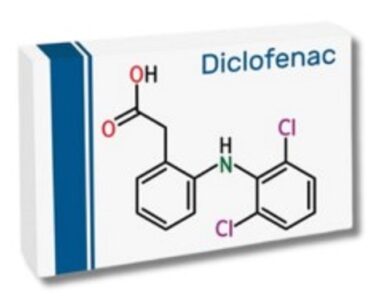


1 Comment